“JoJo’s Bizarre Adventure: Stone Ocean” is an episode that serves as a link between the previous series and this new era of the JoJo anime. Since its release, it has received high praise from viewers and also commendation for Kamikaze Douga, who once again produced opening animations for the JoJo series after a 6-year hiatus.

Kamikaze Douga is a Japanese animation studio specializing in creating hand-drawn 3DCG animations. From 2012 to 2015, they were well-known for their involvement in producing opening animations for the first three parts of the JoJo series, gaining attention both inside and outside of the industry.
Since its inception, Kamikaze Douga, with its small size, has closely followed the latest trends in Japanese animation and visual creation. Its continuous development reflects the journey of change in Japan's independent motion graphic creators.

The Beginning of the Personal Animation Era
Kamikaze Douga was established in 1998 by Junpei Mizusaki. Prior to this, Mizusaki had been inspired by Otomo Katsuhiro's film "Akira" (1988) to enter the animation industry while still in high school, and later enrolled in Kyoto University of Art and Design.
After graduation, Mizusaki became a full-time employee at Nintendo responsible for character modelling and animation work. However, after a certain contract period ended, Nintendo did not renew his contract. He then founded Kamikaze Douga as an individual to take on work.
Kamikaze Douga was originally made up of only three people, with two additional members being Shuhei Morita and Takahiro Murayama. The former went on to direct OVAs such as "FREEDOM" (2006) and short anime films like "SHORT PEACE" (2013), while the latter often served as a character designer for Shuhei Morita.

After learning about the basic information about Kamikaze Douga, we need to mention a person who has no relationship with it at all: Makoto Shinkai.
Makoto Shinkai can be seen as a representative of independent anime creators in Japan from the late 1990s to the early 2000s. He initially entered a game company (Falcom) in Japan, and during his time there, he quietly produced two personal animations – "Other Worlds" (1999) and "She and Her Cat Everything Flows" (1999). He also created an unprecedented 30-minute animated film, "Voices of a Distant Star" (2002), where he alone assumed directing, scriptwriting, acting, drawing, art direction, editing, and even pre-recorded voicework roles.
Makoto Shinkai became famous because of "Voices of a Distant Star”. At that time Makoto Shinkai was a rare author who produced such a high-quality, long animation in his personal capacity and gained social attention. With it came real consequences - Shuhei Morita once said that around 2002-03, "there was no very sound environment for making long CG anime" in Japan, "there were no professional animators specializing in creating full-length CG anime", so these independent CG anime creators had difficulty obtaining state loans for creation.

In the 1990s, CG education was not well developed in Japan, and why Makoto Shinkai was able to succeed, besides his own reasons - a good family background, already having the opportunity to access computers as a child, having work experience in game companies when he was older, and having accumulated some knowledge of digital and 3DCG techniques and presentation styles - there was also a very important reason, which was that Japan was in the 1990s, when home computers began to gradually enter households, and from the beginning of the 2000s, the price of CG software became more affordable, and with the help of digital technology, making animation became simpler and more efficient.
This huge change in the environment meant that animation production was also liberated from collective work and capital control, and the threshold for individual animation production was greatly reduced. Not to mention, even authors like Makoto Shinkai, who are not good at drawing animation characters, can also make limited Japanese-style animations using personal computer devices.
The birth of Kamikaze Douga naturally couldn't have been separated from such an environment.
Junpei Mizusaki may not have achieved the same level of fame as Makoto Shinkai, but his experiences are highly similar. Kamikaze Douga's initial three-person team also made their first independent animation, "GASOLINE MASK," in 1998. They then did some personal work and took on some commercial projects before disbanding. Junpei Mizusaki worked at STUDIO 4℃ for two years.
In 2003, Kamikaze Douga reformed and released an OVA adaptation of Matsumoto Taiyo's manga, "No.5," which made them famous. After that, Kamikaze Douga entered the commercial market and started working on more projects. They not only worked on short film adaptations based on Otsuichi's novels such as "ZOO" (2005), but also created opening and ending themes for numerous games like the "Mega Man" and "Dragon Quest" series. Their accumulated experience and reputation in game and music video production led them to work on opening theme songs for “JoJo."

The OP of "JoJo's Bizarre Adventure" was directed by Junpei Mizusaki. The opening theme reflects Junpei Mizusaki's aesthetic. As he once revealed his love for the density of covers in "Weekly Shonen Jump, "experience in graphic design also has a big influence. How to handle things like flyers or websites, desktop publishing or pixel art, images or proof copies.”
Junpei Mizusaki gave "JoJo" an anime style that brings back the flatness of manga, creating a world filled with comic symbols and textures. This animation effect that makes it look like manga is moving has touched many fans of the show. Since then, until "JoJo" returned with Kamikaze Douga in season 6, Junpei Mizusaki only directed one more opening theme. He once again showcased the uniqueness of the comic space with three-dimensional 3DCG.
The Domain of the Motion Graphic Creators
Since its establishment over a decade ago, Kamikaze Douga has not been a traditional animation company that specializes in contracting for the production of entire commercial animation films. Instead, they are a "Motion Graphic Creators" group.
In Wikipedia, "Motion Graphic Creators" is referred to as an aggregate term for writers who specialize in creating motion graphic works. It includes professions such as film directors, animation directors, TV drama directors, advertising directors, music video directors, and CG creators.

I believes that it can be concluded that Motion Graphic Creators belong to the following domains:
On one hand, the author understands that what they are creating are visuals rather than other contents (stories, music, literature, etc.) that accompany the visuals. They even have a strong sense of being Motion Graphic Creators and present their writerly aspects in the visuals. On the other hand, Motion Graphic Creators can be ranked alongside other job titles such as film directors or animation directors. However, this group is more pure in nature as it emphasizes the creation of visuals itself.
Motion Graphic Creators don't just create works that they want to create or cater to the art collector market. Instead, they embrace mainstream commercial market needs while also expressing their writerly nature within given subject matters assigned by clients. Japan's rich advertising and MV creativity has set itself apart as a global leader, and these industries require a large number of visual talents.
Yukihiro Morigaki, a former advertising professional turned film director, believes that new technologies often start in advertising, where his work was instrumental, and he intends to continue doing advertising work even when making films, using what he has learned from the world of advertising to shoot both movies and TV shows.
Many image writers often begin their careers in the advertising and music video industries before transitioning to film directing. In recent years, emerging film directors such as Makoto Nagahisa (known for "And So We Put Goldfish In The Pool") and Yuki Yamato (director of "Drowning Love") exemplify this trend. Kamikaze Dougai's image writers and group possess the ability to craft music videos, original entertainment dramas (OEDs), original video animations (OVAs), animated films, advertisements, and more, showcasing a keen sense of visual storytelling.

New Ways for Mainstream Animation
The opening sequence of JoJo's Bizarre Adventure was a unique project as it was completely outsourced, from the initial design to the final production, to Kamikaze Douga—an uncommon practice at that time. This collaboration became a landmark event, signifying the start of a new era where visual novelists and teams like Kamikaze Douga actively engaged in large-scale mainstream commercial animation projects. This marked the beginning of a period where visual novelists had the opportunity to freely express their creativity within the realm of Japanese animation.
It wasn't just visual novelists entering the mainstream animation scene that changed; the animation industry itself changed internally as well. In 2011, Aniplex, a production and planning company under Sony Music, attempted to launch a cross-media collaborative original anime, “Madoka☆Magica”. Its success inspired more crossover individuals to participate in anime production over the past decade, so we can see talents from TV dramas, movies, novels, games, and other fields participating in an anime and even realizing career transitions. As a result, the themes and representation of mainstream Japanese commercial animation have also been expanded.

In addition, people within the animation industry are seeking new ways of expression, such as Makoto Shinkai using video scripting after “The Garden of Words” to further enhance his strength in early control of music and images. Hideaki Anno used the methodology from the three episodes of “Rebuild of Evangelion 4.0: Final” (2021) when creating the series by reorganizing and evolving them into a film-making approach based on the shooting of real actors and location shoots, which would feed back into anime script writing.

Netflix, Disney and other foreign companies entered the Japanese anime industry in the second half of the 2010s and pushed for more cross-industry, cross-border IP cooperation worldwide with abundant funds. Kamikaze Douga naturally received a large order from Warner Brothers, the producer of JoJo's TV anime, which is a derivative work based on the classic DC Comics superhero “Batman Ninja" (2018). As Kamikaze Douga's first feature film, it was directed by Junpei Mizusaki himself. To gain control over the production side, even in such a large IP collaboration project, Kamikaze Douga still used independent funding instead of producing committees to make the film.

The movie innovatively lets the characters travel back to ancient Japan and let these "foreigners" adapt to local customs. This approach has been welcomed by overseas audiences. In a sense, Junpei Mizusaki wanted to introduce Japanese culture in this way and made a Japanese movie that foreigners want to watch by chance.
On the one hand, this mixed-style samurai film is full of tributes to the internationally renowned Japanese director Akira Kurosawa. The foreign IP becomes a channel for foreigners to understand Japanese samurai culture in the film, and the playful mix elements also make the presentation of local culture not obscure; On the other hand, Kamikaze Douga's expertise in imitating hand-drawn animation with three-dimensional computer graphics also retains the performance style of Japanese hand-drawn limited animation, allowing the style of Japanese animation to be fully displayed in overseas IP works.
After that, Kamikaze Douga received an invitation from Disney to create a short story in the “Star Wars: Visions”(2021) IP derivative series - The Duel. This can be said to be a copycat of "Batman Ninja,” as the Star Wars originally had a tribute to Akira Kurosawa's film, and this time Kamikaze Douga once again paid homage to Akira Kurosawa in his Japanese identity. On this basis, they once again parodied the style of black and white films in a 3DCG way. This derivative work also became a landmark event for Disney's streaming service entering the Japanese animation industry.

Such a work is believed to have emerged not only because Kamikaze Douga himself has the thought of imaging author/group, but also because of the changes within the Japanese animation industry over the past decade. This is a product of a mainstream commercial animation team cooperating with an imaging writer, and at the same time, it is also a carnival of several imaging writers.
Exploring New Frontiers in Indecent Animation
Kamikaze Douga, who has enjoyed success on the business side, has not forgotten his role as an animation creator. In October 2016, Kamikaze Douga released a short-form animated film called "COCOLORS" in Japan. What makes this work stand out is that it was an independent animated film made with personal funding by Kamikaze Douga, inspired by his debut work, "Gasoline Mask".

"COCOLORS" is an animation without mainstream elements because these characters live in a post-apocalyptic world full of ashes; they must wear protective suits and masks to survive. Therefore, the biggest challenge for Kamikaze Douga was to present characters and stories without showing their expressions.
Furthermore, Kamikaze Douga's decision to create independent animation also reveals a cross-section of the new era of Japanese animation: In recent years, there has been a surge in indie animation in Japan due to an increased demand for animated visuals in advertising and music videos. This industry's clients not only invite commercial production companies to create their visual content but also send invitations to independent animators and groups.
Conclusion
Nowadays, Japanese animation has undoubtedly received the highest attention, which is largely due to popular works such as "Your Name" (2016) and "Demon Slayer" (2019). We have witnessed the mainstream absorption of subcultures over the past decade.
However, among the Japanese animation that has become mainstream, there are also numerous Motion Graphic Creators like Kamikaze Douga. They quietly lead Japanese animation towards a new stage, seeking new animation life. Kamikaze Douga's development process completely reflects this hidden line in Japanese animation.
On the other hand, this also cannot be separated from Junpei Mizusaki's business philosophy of never forgetting his original intentions. Commercial needs and independent creation are skilfully balanced, occasionally causing phenomenal topics in the world and sometimes emitting fragrance on thorny paths.


















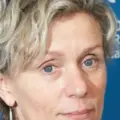










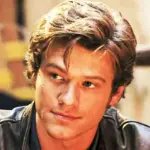










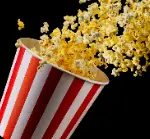

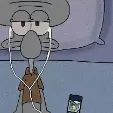


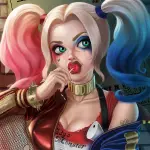









Share your thoughts!
Be the first to start the conversation.